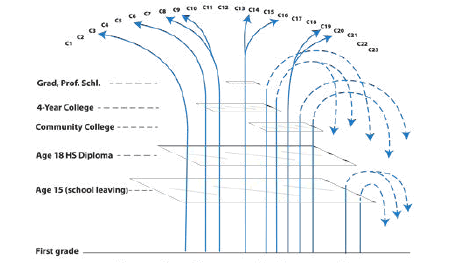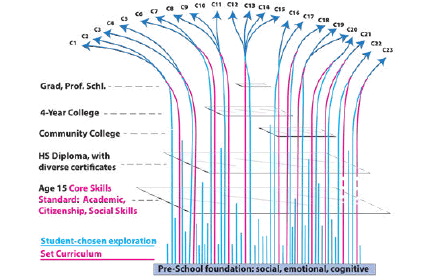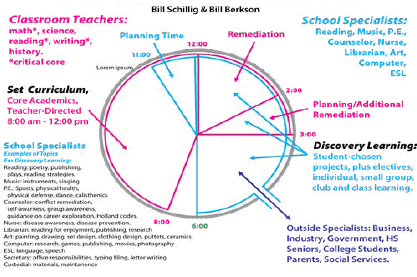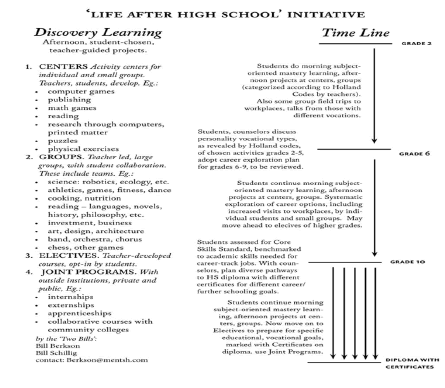The Misalignment of Schools and Society-Restructuring Education for Success after High School
Received: 20-Dec-2022 / Manuscript No. jcmhe-22-84283 / Editor assigned: 22-Dec-2022 / PreQC No. jcmhe-22-84283 (PQ) / Reviewed: 05-Jan-2023 / QC No. jcmhe-22-84283 / Revised: 10-Jan-2023 / Manuscript No. jcmhe-22-84283 (R) / Published Date: 17-Jan-2023 DOI: 10.4172/2168-9717.1000797
Abstract
The misalignment between schools and adult society is a grave problem, demanding transformational change. Nationally, 15% of high school students drop out, while 60% of Community College and 40% of 4 year college students don’t finish within six years. As retired educators, we have been life-long witnesses of the dysfunction, and its victims.
To help all students, schools need to provide more diverse, specialized training for the demands of hugely different adult careers. We propose a Career-Education Alignment Commission (CEAC, ‘seek’) to ascertain the changes needed to serve well those who are now poorly served.
Students will need to explore their interests through project-based learning, from 2nd grade on, to discover by age 15 a career path they can have a passion for. And students will need daily coaching, before they fall behind, for mastery of the academic skills needed for the diverse specialties. And the school day needs to be expanded to include both activities. The CEAC commission would identify needed changes, and the funding and training to make them a success.
Keywords: K-9 education; Transforming K-12 education; Education standards; Minority students; Underachieving students; Mastery learning; Project-based learning
Introduction
K-12 schools should prepare all students for success in life beyond high school: success in an immediate career, or in further education leading to a successful career. However, our schools currently fail to help a majority of students to achieve these critical goals. Student scores on the ACT college admissions exam have been getting worse for five years straight, now being the lowest in over thirty years [1]. At the same time, rates of student anxiety, depression, and suicide have been continually increasing [2]. Though the covid epidemic has made matters worse, the declining student performance and increasing student distress predate the epidemic. About 15% of American students don’t graduate high school on time [3]. And over 60% who start 2 year colleges, and nearly 40% who start 4 year colleges, fail to finish within 6 years [4]. Further, among high school graduates, nearly a quarter of those who take the Armed Forces Qualifying Test fail it, indicating a lack of the basic academic skills needed for most adult vocations [5]. Further, even for of those who graduate college, according to a 2013 study by the Federal Reserve, only 27% do work related to their major, and 38% are doing work that doesn’t require a college degree [6].
Poor and minority students are disproportionately left behind, and this failure to help the disadvantaged to achieve career or college readiness is the most consequential failure of our educational system [7].
The good news is that it is possible for students to be ambitious in their careers, and both to progress successfully towards their career goals, and to achieve relative peace of mind during their pursuit of the goals. The key to peace of mind is a justified student confidence that they will succeed at the next turning point in life that affects their career aspirations a turning point such as entry to high school or college. Our system is now failing to develop in students such justified confidence. The system can be changed, though, to give almost all students, except the severely disabled, confidence of success at their next turning point in life.
What Must Change for Improvement?
Two proven modes of learning can remedy these failings of our K-12 system, and prepare all students for success after high school. The first mode is project-based learning. Student-chosen projects have proven to be highly engaging and enjoyable for students. Researchers J. Mehta and S. Fine have found that project-based learning is also the key to acquiring ‘deeper learning’ skills: the skills of inquiry, such as creative problem-solving, critical thinking, and collaborative learning skills critical in the world of work [8].
If schools implement Project-based learning well, it can help prepare all students, excepting those with special needs, for success after high school. First, if schools institute student chosen projects in elementary school, from second grade on, students can explore and discover the subjects and activities they have a passion for and talents in. Then, in middle school, students can, with school assistance, learn how their interests and abilities align with the world of work post high school and post-college careers. After exploration, by age 15 students should have an idea of whether they want a career immediately on graduation, or after further education leading to a career. And they should have a clear enough career goal to decide on what specialized training, courses, and projects to take in their last three high school years. As psychologist Edward Deci has documented, having such a commitment to a long term goal is the key to sustained motivation [9].
Students also need to acquire the academic skills it takes to succeed in the pathway they choose. Here the second critical mode of learning, Mastery Learning, is needed. The core idea is that the schools should not push students ahead to learning more advanced skills before they have mastered the more basic skills, just because they have put in the ‘seat time’. Our current system is failing in this way, as Gallup surveys have found: while 3/4 of 5th graders are engaged in their studies, engagement steadily drops until only 1/3 of those in the last years of high school are engaged, and engagement is highly correlated with achievement [10]. By the final years, most students are marking time in class, not understanding well, caring, or mastering their lessons (Figures 1 and 2).
In mastery learning, the student’s current skill level is first ascertained. Then students are taught the next level, and assessed to see if they have mastered it. If they haven’t yet achieved mastery, they are immediately given ‘corrective’ or remedial coaching to master the skill. The mastery approach has been around for over 60 years. Thomas Guskey and other researchers have found that “students in well-implemented mastery learning classes consistently reach higher levels of achievement [10].” Mastery learning needs to begin in early grades, so it can gently but persistently push students forward to the point where they have, by age 15, mastered the foundational academic skills it takes to hold a career-track job in our economy. Those who haven’t achieved the foundations by age 15 can be given further assistance. Those who master the foundations early can advance earlier to mastering diverse higher academic skills that serve their chosen goals.
The key here is that students with diverse interests and talents are offered diverse programs, and are prepared to the specific, varied academic skills and standards needed for their varied goals. But in all cases, the exploration of career goals through project-based learning, and the mastery learning complement and support each other. The exploration through project-based learning develops powerful motivation, and the mastery learning provides the skilled needed to pursue the goals.
Here, we are focused on K-12, but changes before and after are also needed. The small percentage of graduates working in their fields shows that better career guidance of college students and coordination of their education programs and careers is needed. And more help is needed for early childhood, so that the children of less educated parents don’t start school behind others, as is the case now.
How can Project-Based and Mastery Learning be Implemented to Successfully Serve Career and College Readiness?
First, the school day needs to be expanded by two hours to allow time for both project-based and corrective or enrichment instruction with mastery learning. Schools in the Every Hour Counts (www.everyhourcounts.org) network of cities have already expanded days. Mornings can be devoted to academic instruction, midday hours to a mix of remedial coaching, enrichment, lunch, and play, and the final two hours devoted to student projects. In this schedule, teachers could work in shifts, with academic teachers coming first, and specialty teachers arriving later, and staying later to monitor and guide student projects (Figure 3).
Second, states need to re-align exit standards to real world demands beyond high school [11]. They need to develop assessments for a foundational academic standard at age 15, aligned with the minimum academic skills needed for a career track job in our economy. (The current military exam, or a modification of it, may serve.) Then, with the help of businesses and higher education, they need to develop diverse standards for certifying mastery of the varied specialties, vocational and academic. The diploma would indicate achievement of the foundational common standard, as well as diverse certificates both for the academic levels needed for the specialties, and for proficiency in specialties themselves.
Discussion
These four changes individually are proven successes, either in specific states here in the US, or around the world. Our conviction is that all have to be combined to transform our school systems for the better. Currently half of students fail to be prepared for life beyond high school. Only when all changes combined will the currently failing half is lifted to the point where they are fully prepared to succeed after high school, either in immediate work or in higher education.
Effective implementation of such structural changes is a major challenge. It will require new funds for additional teachers for the expanded day, and for additional teachers to free time for master teachers to mentor other teachers. To justify such funds to legislatures will require a proof of concepts in pilot programs, on a small scale (Figure 4).
Conclusion
We recommend creation of state Career-Education Alignment Commissions (CEAC, ‘seek’) to diversify and realign standards, and fund and monitor pilots. The CEACs would include representatives from business, government, education, and military, who would consult other experts, and coordinate with other CEACs. The CEACs would propose realigned standards, start pilots, beginning in early grades, of the expanded day and project- based learning, and assess the pilots. There is every indication that, with adequate funding and care, project-based learning and mastery learning can much better prepare all students for success in life after high school.
Acknowledgement
None
Conflict of Interest
None
References
- Sarisohn H, Maxouris C (2022) US high schools seniors of 2022 had lowest average ACT score in more than three decades. But scores have for years been going down. CNN.
- Osorio A (2022) Research update: Childrens anxiety and depression on the rise.
- Nadworny E (2019) College completion rates are up, but the numbers will still surprise you.
- Theokas C, Plumer B (2013) Only 27% of college grads have a job related to their major.
- Meckler L, Natanson H (2020) A lost generation: Surge of research reveals students sliding backward, most vulnerable worst affected.
- Mehta J, Fine S (2019) In search of deeper learning: The quest to remake the American high school. Harvard University Press.
- Deci EL (1996) Why we do what we do: Understanding self-motivation. Penguin.
- Brenneman R (2016) Gallup student poll finds engagement in school dropping by grade level.
- Reckmeyer M (2019) Focus on student engagement for better academic outcomes.
- Gusky TR (2010) Lessons of Mastery Learning.
- Salman J (2022) Standardized tests in their current format are ‘incredibly antiquated’.
Citation: Berkson W, Schillig WB (2023) The Misalignment of Schools and Society- Restructuring Education for Success after High School. J Community Med Health Educ 13:797. DOI: 10.4172/2168-9717.1000797
Copyright: © 2023 Berkson W, et al. This is an open-access article distributed under the terms of the Creative Commons Attribution License, which permits unrestricted use, distribution, and reproduction in any medium, provided the original author and source are credited.
Select your language of interest to view the total content in your interested language
Share This Article
Recommended Journals
Open Access Journals
Article Tools
Article Usage
- Total views: 6090
- [From(publication date): 0-2023 - Dec 06, 2025]
- Breakdown by view type
- HTML page views: 5530
- PDF downloads: 560




